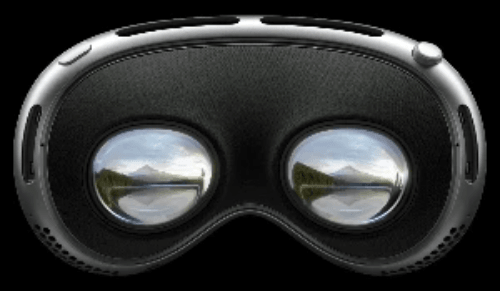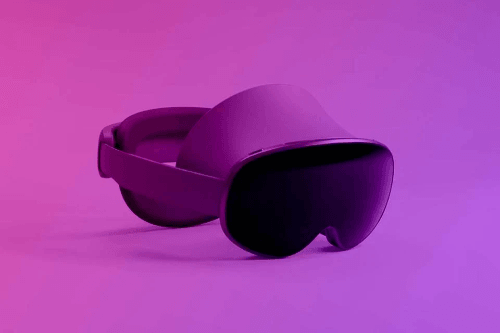Apple’s entrance into the mixed-reality space with the Vision Pro set off a wave of excitement—and raised questions. Is it truly the future of spatial computing or a luxury toy for the elite? At $3,499, the Apple Vision Pro promises next-gen immersion, seamless integration with your Apple devices, and a futuristic computing experience. But is it worth it?
We’ll explore everything you need to know about the Apple Vision Pro—from its design to its use cases—and then look at more accessible and capable alternatives that might be a better fit for your budget or needs.
*Disclaimer: This post may contain affiliate links, including Amazon links. As an Amazon Associate, we earn from qualifying purchases — at no extra cost to you.*
Apple Vision Pro: A Deep Dive

What It Is
The Apple Vision Pro is Apple’s first spatial computer, seamlessly blending virtual reality (VR) and augmented reality (AR) into a "mixed reality" experience. It features an ultra-high-resolution micro-OLED display (23 million pixels across both eyes), along with eye- and hand-tracking capabilities, and is powered by Apple's custom R1 chip, which processes real-time sensor input at lightning speed.
💡 Key Features
- Micro-OLED Display: Ultra-crisp, lifelike image quality.
- Eye Tracking & Hand Gestures: Navigate without a controller.
- Seamless Apple Ecosystem: Connects to your Mac, iPhone, iCloud, FaceTime, iMessage, and more.
- 3D Camera: Capture spatial photos and videos.
- VisionOS: A brand-new operating system made for spatial computing
- Digital Crown: Instantly dial reality up or down
What It’s Great For
- Watching immersive content in your own "cinema"
- Collaborating with others via FaceTime in a 3D workspace
- Expanding your Mac display into a private 360° experience
- Capturing spatial memories (videos/photos)
⚠️ What to Watch Out forr
Price: Starts at $3,499—not including accessories like straps or prescription lens inserts
Comfort: Weighs over 600g and uses a tethered battery pack
Content: Still early-stage app ecosystem; some users find it too limited for productivity
Privacy: Eye tracking and always-on cameras raise new concerns
Battery Life: 2–2.5 hours with external battery or all day when plugged in
✅ Who Should Buy
- Hardcore Apple fans or developers
- Media professionals who want the best screen and camera setup
- Early adopters who want to experience the future, now
Rating: ★★★★☆ (4.3/5—early adopter feedback)
Where to Buy: Apple Store (requires Face ID device)
Insider Tip: Wait for light-clip accessories or comfort straps—they'll improve wearability for longer sessions.
🔄 5 Best Alternatives to Apple Vision Pro (2025)
If you love the concept of spatial computing but aren’t ready to spend $3,499 (plus tax), here are the top alternatives that offer powerful performance and immersive experiences, often for a fraction of the price.
1. Meta Quest 3
Rating: ★★★★★ (4.7/5 from >15,000 reviews)
Type: Standalone VR/MR Headset
Best For: Budget-minded gamers and casual mixed-reality users
Where to Buy: Amazon ($499 base / $649 for 512 GB)
Why It’s a Great Alternative:
With a Snapdragon XR2 Gen 2, 2064×2208 resolution per eye, 120 Hz refresh, and pancake lenses, Quest 3 offers sharp visuals and simple mixed-reality features at 1/7th the Vision Pro price. Hand-tracking and Meta’s vast game ecosystem make it a home run for everyday use, even more so given ~15k+ glowing user reviews.
Insider Tip: Upgrade to the adjustable Elite Strap for better comfort and longer play sessions.
2. Meta Quest Pr0
Rating: ★★★★☆ (4.5/5)
Type: Premium VR Headset with Eye Tracking
Best For: Lookers for productivity tools and VR collaboration
Where to Buy: Amazon (~$999.99)
Why It’s Worth It:
Adds eye-tracking, bi-directional controllers, and enhanced comfort—features the Vision Pro shares, but at roughly a third of the cost—a solid bridge between gaming and work.
Insider Tip: Ideal for remote collaboration via Horizon Workrooms—eye-tracking makes virtual presence feel more natural.
3. XREAL Air 2 Ultra

Rating: ★★★★☆ (4.4/5)
Type: AR Glasses / Screen Mirroring
Best For: Portable media watchers and casual AR users
Where to Buy: XREAL Shop ($699,00)
Why It’s Smart: Sony micro-OLED, 120 Hz refresh, spatial and hand-tracking in a lightweight 80‑g frame. Turns your phone or laptop into a private virtual screen—without calling attention.
Insider Tip: Plug into your laptop for a massive "virtual monitor" setup anywhere—ideal for travel or café productivity.
4. Magic Leap 22
Rating: ★★★★☆ (4.3/5)
Type: Enterprise AR Headset
Best For: R&D professionals, industrial use, lightweight focus
Where to Buy: Amazon ($4,409.65)
Why It’s Not Just for Work:
Boasts a 1440 x 1760 pixel resolution display and a wide 70° field of view, enhanced by built-in 120Hz dynamic global and segmented dimming technology. It has a featherweight 260g design—making it more comfortable than Vision Pro. Though enterprise-focused, it holds promise for immersive AR experiences.
Insider Tip: Power users benefit from compatibility with Android tools and ergonomic fit—step into AR without bouncing weight.
5. Samsung + Google Project Moohan (Coming 2025)

Rating: Anticipated pre-launch buzz
Type: Mixed Reality Developer Prototype
Best For: Android users and future-focused early adopters
Where to Buy: Estimated < $1,500 (late 2025)
Why It’s Promising:
Micro-OLED display above Vision Pro resolution (>3800 ppi), Snapdragon XR2+ Gen 2, hand/eye tracking, external battery design, and AI-driven features via Android XR & Gemini AI.
Insider Tip: Keep a watch on launch announcements this summer—it may finally challenge Apple's premium lead.
Final Take
If you live in the Apple ecosystem and can stretch your budget—it’s the Vision Pro, hands down. But for everyday users:
Best overall value: Meta Quest 3 — superb visuals, gaming, mixed-reality, and big library—all under $650.
Work and comfort upgrade: Meta Quest Pro adds collaboration tools and eye-tracking.
Lightweight AR portability: XREAL Air 2 Ultra is the only lightweight, glasses-style solution with practical screen functionality.
Staying future-ready: Project Moohan deserves your attention if you're Android-aligned and want AR with AI.



